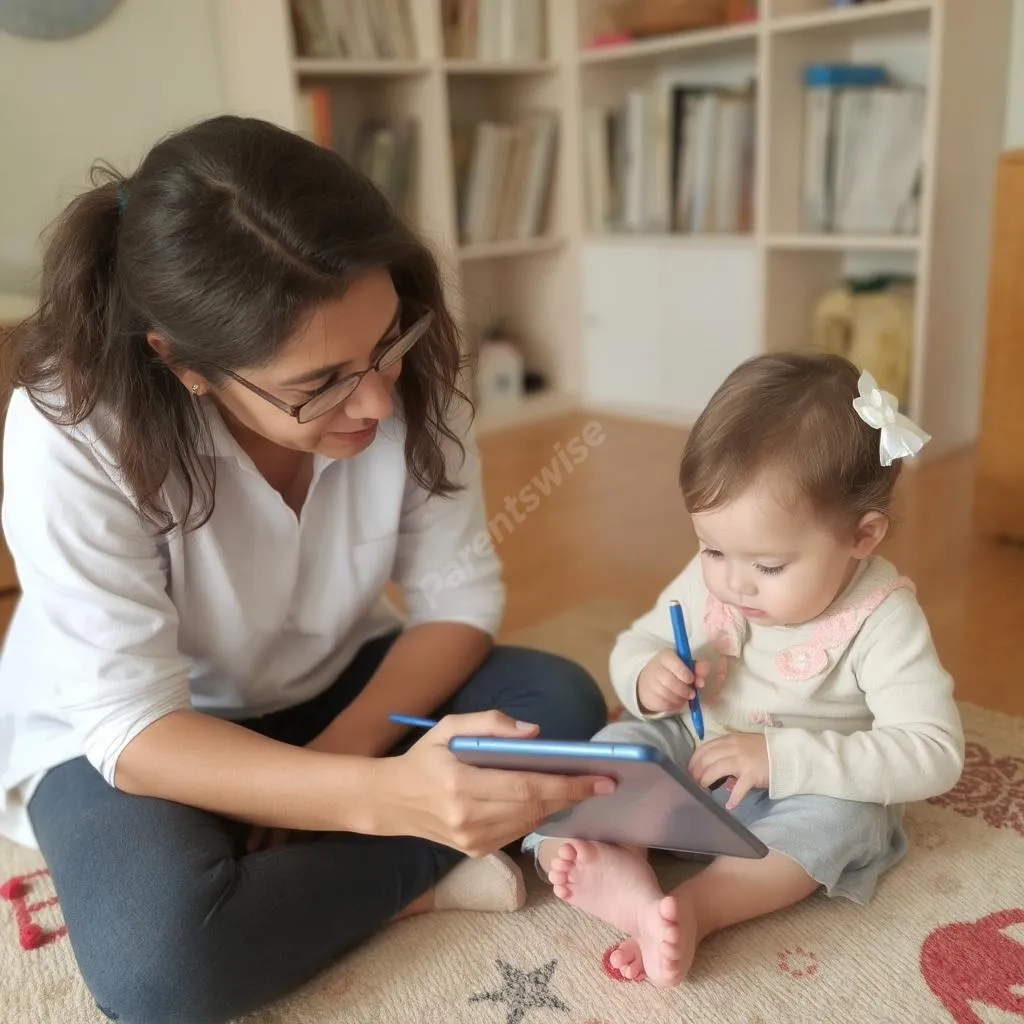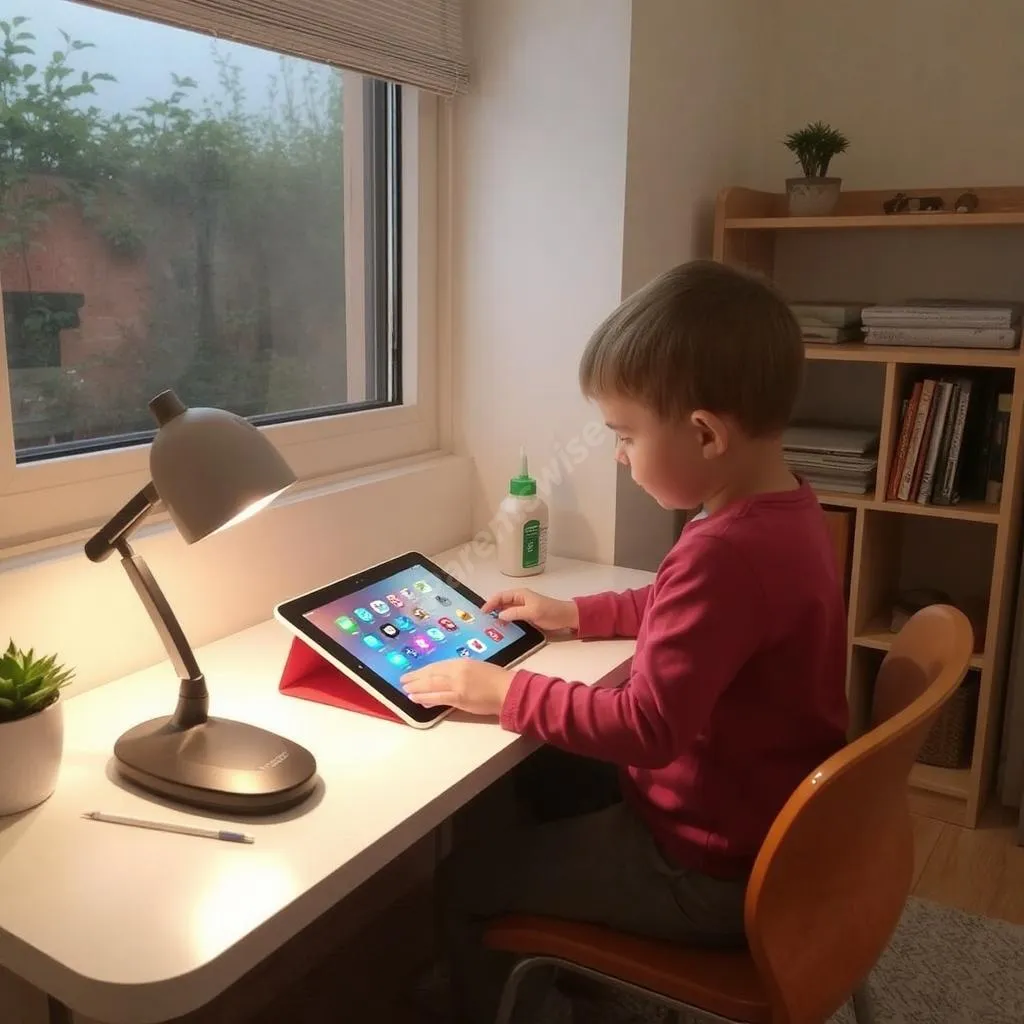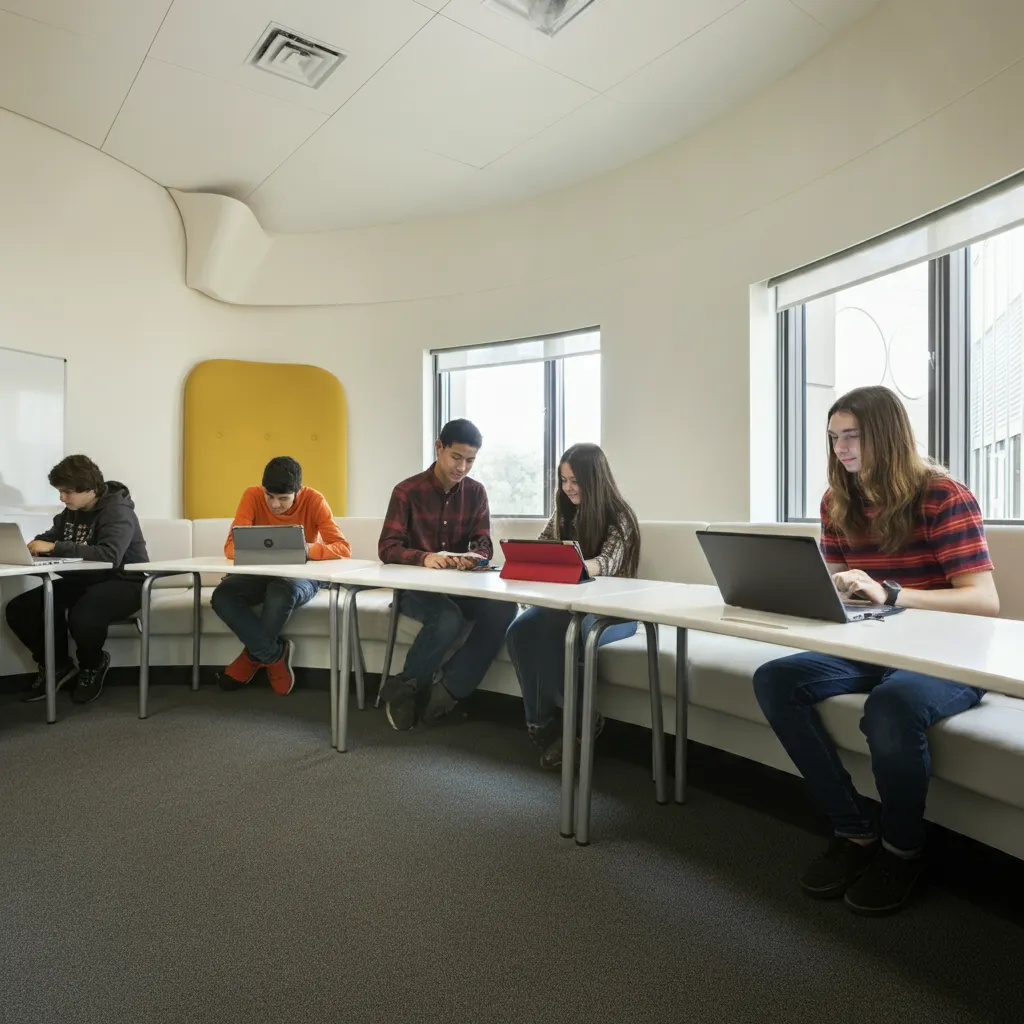How to Manage Screen Time for Kids with Special Needs?

Are you worried about your special needs child’s screen time? You’re not alone in this journey. Recent research shows that 8 out of 10 parents of children with special needs face similar challenges.
Here’s what makes this topic so important:
- Traditional screen time rules often don’t fit our children’s needs
- Each child needs a unique approach to screen time
- The right strategy can turn screen time into a powerful learning tool
In this parent-friendly guide, we’ll help you:
- Create a balanced screen time plan
- Transform screen time from stress to success
- Find solutions that work for your family
Think of this guide as your personal roadmap to managing screen time. We’ll walk through every step together, using simple strategies that really work.
The Benefits and Risks of Screen Time for Special Needs Children
When it comes to screen time for children with special needs, we need to look at both sides of the coin. Let’s explore how screens can be helpful tools while being mindful of potential challenges that may arise.
Benefits of Screen Time
Screen time, when used thoughtfully, can become a powerful tool for development and learning. Many parents have discovered that digital devices offer unique opportunities that traditional methods might not provide.
Educational Growth has been one of the most significant advantages. Digital learning platforms can adjust to your child’s pace and learning style, making education more accessible and enjoyable. For instance, many children with autism spectrum disorder (ASD) respond particularly well to visual learning through tablets and computers. These tools offer:
- Interactive learning apps that adapt to your child’s progress
- Visual learning materials that break down complex concepts
- Customizable content that matches your child’s interests and abilities
Communication Development is another crucial area where screen time proves valuable. For children who struggle with traditional communication methods, technology can open new doors. Speech therapists often recommend:
- Communication apps that help non-verbal children express their needs
- Visual schedule apps that make daily routines more predictable
- Social story platforms that help children understand different situations
Therapeutic Applications extend beyond basic learning. Many occupational and physical therapists now incorporate screen-based activities into their treatment plans because:
- Touch screens help develop fine motor skills through tapping and swiping
- Special apps can improve hand-eye coordination
- Digital activities can be adjusted to match your child’s sensory preferences
Potential Concerns to Watch For
While the benefits are significant, we must also address the challenges that may arise. Being aware of these potential issues helps you create better screen time strategies.
Physical Health Impacts need careful consideration. Extended screen time can affect your child’s physical well-being in several ways:
- Extended viewing can cause eye fatigue and strain
- Poor posture while using devices might lead to discomfort
- Too much sedentary screen time could reduce physical activity
Daily Routine Disruptions can occur if screen time isn’t properly managed. Parents often notice:
- Sleep patterns may be affected by blue light exposure before bedtime
- Meals might become challenging if screens are present
- Transitions between activities can become more difficult
Dr. Sarah Thompson, a pediatric developmental specialist, offers this valuable insight: “The goal isn’t to eliminate screen time but to harness its benefits while minimizing potential drawbacks. Each child’s needs are unique, so what works for one may not work for another.”
Creating a Personalized Screen Time Plan
Assessing Your Child’s Needs
Every special needs child is unique. Let’s create a plan that works for your child.
Start With Professional Input
Your child’s healthcare team knows their needs best. Set up a meeting with your child’s:
- Doctor
- Therapist
- Special education teacher
They can help you understand how screens might help your child grow. They’ll also warn you about any risks.
Watch Your Child’s Response
Pay close attention to how your child acts with screens. Look for these key signs:
- Does your child stay calm while using screens?
- Can they move away from screens easily?
- Do certain apps or shows cause stress?
Write down what you notice. This will help you make better choices.
Set Clear Goals
Think about what you want screen time to do for your child. Some common goals are:
- Learning new skills
- Better communication
- Having fun
- Building confidence

Age-Appropriate Guidelines
Different ages need different rules. Here’s a simple guide to help you start:
Toddlers (2-3 years)
- Keep sessions short (10-15 minutes)
- Always watch together
- Choose simple, slow-paced content
- Focus on learning basic concepts
Preschoolers (4-5 years)
- Allow 20-30 minute sessions
- Mix learning and fun
- Include movement activities
- Practice basic tablet skills
School-Age (6-12 years)
- Balance screen time with other activities
- Use educational apps that match school topics
- Try social skills games
- Teach basic internet safety
Remember: These are just starting points. Your child might need more or less time. That’s okay!
Expert Tip: Dr. James Miller, child development expert, says: “Think of screen time like a diet. Some days your child might need more, other days less. Stay flexible.”
Practical Implementation Strategies
Creating the right environment and using proper tools can make screen time more beneficial for your special needs child. Let’s explore how to set this up in your home.
Setting Up the Environment
The physical space where your child uses screens plays a huge role in their experience. Think of it as creating a special learning corner in your home. This space should support both their physical comfort and ability to focus.
Physical Comfort Essentials
Your child’s body position affects how well they can use screens. Here’s what you need to know:
The basics of a comfortable setup include:
- Chair height that allows feet to rest flat
- Screen positioned at eye level
- Arms supported when using devices
- Good back support
Taking care of these basics helps prevent tiredness and strain. Remember the 20-20-20 rule: every 20 minutes, look 20 feet away for 20 seconds. This simple rule helps prevent eye strain.

Creating the Perfect Lighting
Good lighting prevents eye strain and helps your child stay focused. Consider these important factors:
Natural light works best because:
- It’s easier on the eyes
- Helps maintain attention
- Supports natural sleep patterns
But be careful with lighting placement:
- Avoid glare on screens
- Place lights behind or beside screens
- Keep room lighting gentle but sufficient
Making a Sensory-Smart Space
Every child has unique sensory needs. Watch how your child responds to different environments. Some children need a very quiet space, while others work better with background sounds.
Key elements of a sensory-friendly space:
Noise management
- Use noise-canceling headphones if needed
- Consider white noise machines
- Create a quiet corner if possible
Visual organization
- Keep the area clutter-free
- Use calming colors
- Remove distracting items
Technology Tools and Controls
Managing screen time becomes easier with the right digital tools. Let’s explore the most helpful options and how to use them effectively.
Essential Parental Controls
Modern devices offer built-in features to help manage screen time. Setting these up takes time, but the benefits are worth it:
Basic controls to set up:
- Time limits for apps and overall use
- Content filters for age-appropriate material
- Purchase restrictions
- Safe search settings
Dr. Lisa Chen, an Occupational Therapist, shares: “Start with one control at a time. Master it before adding more. This prevents overwhelm for both parent and child.”
Helpful Accessibility Features
Today’s devices include many features that make them easier for special needs children to use:
Common helpful features:
- Text-to-speech for reading support
- Touch sensitivity adjustments
- Screen color adjustments
- Voice commands
Pro Tip: Create a checklist of daily screen setup tasks. This helps establish a routine that both you and your child can follow.
Making Screen Time Interactive and Meaningful
Screen time becomes more valuable when it involves active engagement rather than passive watching. Let’s explore how to make digital time more enriching for your special needs child.
Quality vs. Quantity
It’s not just about how long your child spends on screens – it’s about what they’re doing during that time. Think of screen time like food: a small portion of nutritious food is better than lots of junk food.
Choosing the Right Content
Not all screen activities are created equal. Here’s what to look for:
High-quality content should:
- Encourage your child to think and respond
- Match their interests and abilities
- Have clear learning goals
- Include positive messages
For example: Instead of watching random cartoons, choose interactive stories that ask questions and encourage participation.
Active vs. Passive Viewing
Transform passive screen time into active learning moments:
Ways to make viewing active:
- Ask questions about what’s happening
- Practice copying movements or sounds
- Draw pictures about the content
- Act out stories together

Family Engagement
Screen time can be a wonderful opportunity for family bonding. Dr. Rachel Wong, Child Development Specialist, notes: “When parents participate in screen activities, children learn better and stay more engaged.”
Co-Viewing Strategies
Make screen time a shared experience:
During co-viewing:
- Sit next to your child
- Comment on what you see
- Connect content to real life
- Show excitement about learning
Real-World Connections
Help your child understand how screen learning applies to daily life:
Try these activities:
- If watching a cooking show, try making a simple recipe together
- After seeing animals on screen, visit a local pet shop
- Practice counting with objects you saw in an app
Conversation Starters
Keep these questions handy during screen time:
- “What do you think will happen next?”
- “How does this remind you of…?”
- “Can you show me how to do that?”
Expert Tip: Speech Therapist Maria Garcia suggests: “Use screen time as a springboard for communication. Even simple reactions like pointing or gesturing build important skills.”
Remember: Every interaction, no matter how small, helps your child learn and grow.
Troubleshooting Common Challenges
Managing screen time can bring up unexpected hurdles. Let’s look at common challenges and practical solutions that really work.
Managing Transitions
Moving from screen time to other activities often causes stress for special needs children. Understanding why transitions are hard helps us handle them better.
Why Transitions Can Be Tough
Many special needs children struggle with transitions because:
- Screens are highly engaging and rewarding
- Change feels unpredictable
- They might need more time to process changes
Creating a Smooth Transition Plan
Here’s a step-by-step approach that many parents find helpful:
Use Visual Timers
Visual countdown tools help children understand time better. Try:
- Sand timers they can watch
- Digital timers with colored segments
- Simple kitchen timers
Give Clear Warnings
Help your child prepare for the end of screen time:
- “Five more minutes until we’re done”
- “Two more minutes, then lunch time”
- “Last video, then we’ll play outside”
Handling Difficult Moments
Sometimes, despite our best efforts, children get upset. That’s okay. Here’s what helps:
During a meltdown:
- Stay calm – your peace helps them find theirs
- Use simple words – “I know it’s hard”
- Offer comfort items – a favorite toy or blanket
- Give space if needed
When to Adjust the Plan
Your screen time plan isn’t set in stone. Watch for signs that changes might be needed.
Signs Your Plan Needs Updates
Pay attention when your child:
- Shows new interests or skills
- Seems bored with current content
- Has changes in therapy goals
- Develops new friendships
Dr. Michael Brown, Child Psychologist, advises: “Think of your screen time plan as a living document. It should grow and change with your child.”
Making Smart Adjustments
When you notice changes are needed:
Observe First
Keep a simple daily log:
- What activities engage them most?
- When do struggles happen?
- Which times of day work best?
Talk with Your Team
Include input from:
- Your child’s therapists
- Teachers
- Healthcare providers
- Family members who help with care
Remember: Small changes often work better than big ones. Start with one adjustment at a time.
Conclusion
Managing screen time for your special needs child is a journey, not a destination. Let’s wrap up with key takeaways and encouragement for your path forward.
Key Points to Remember
Every Child is Unique
Your child’s screen time needs might look different from others. That’s perfectly normal. What matters most is finding what works for your family.
Balance is Key
Remember these core principles:
- Quality matters more than quantity
- Flexibility helps reduce stress
- Small steps lead to big progress

Creating Your Path Forward
Start Small
Begin with these simple steps:
- Choose one area to focus on first
- Try new strategies for a week
- Adjust based on what you learn
Dr. Sarah Martinez, Child Development Expert, shares: “Success comes from small, consistent changes. Don’t feel pressured to perfect everything at once.”
Your Action Plan
Take these steps this week:
- Review your current screen time routine
- Pick one new strategy to try
- Share your goals with your support team
- Celebrate small victories
Remember These Truths:
- You know your child best
- Progress takes time
- It’s okay to adjust your approach
- You’re doing a great job
Moving Forward Together
Screen time can be a positive tool in your child’s development. Trust your instincts, stay flexible, and keep learning. You’re not alone on this journey.

